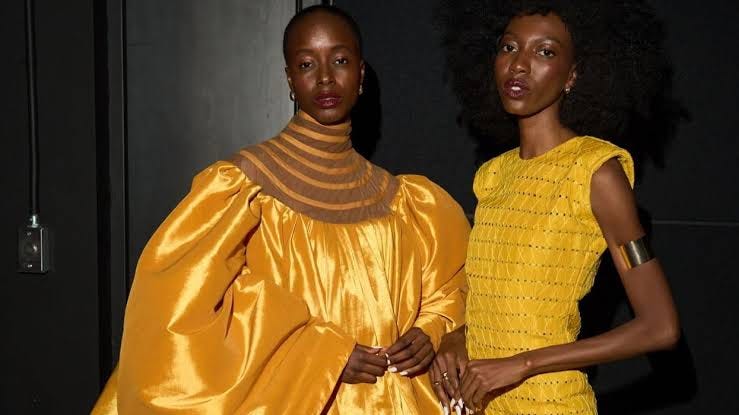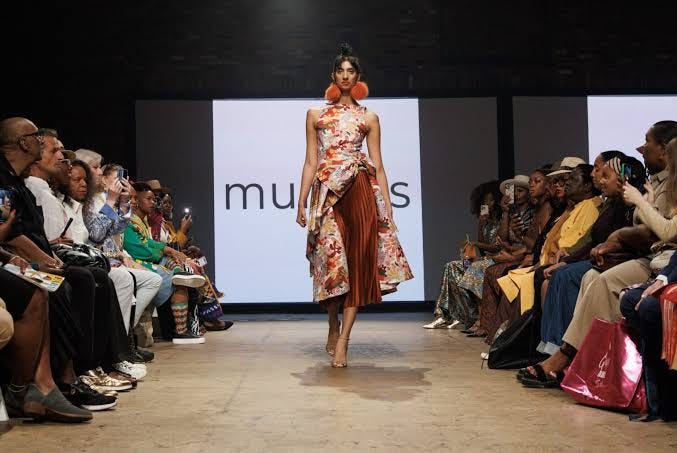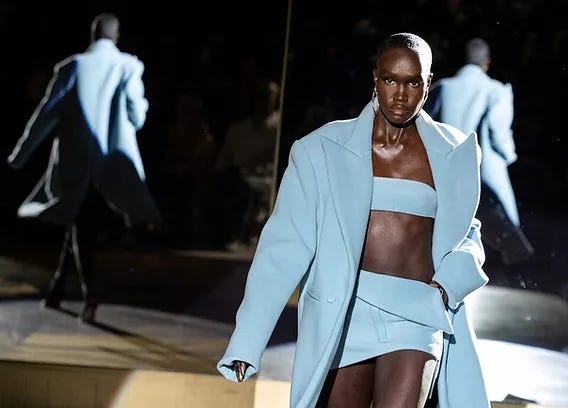African Designers at NYFW 2025: A Step Forward, But What’s Next?
As New York Fashion Week (NYFW) Fall/Winter 2025 comes to a close, the global fashion industry reflects on yet another season of artistic innovation, bold statements, and shifting power dynamics. For African designers, this year’s showcase represents more than just an opportunity to exhibit creative talent—it’s a symbol of hard-fought visibility in an industry that has historically sidelined them.
However, while the presence of African designers on NYFW’s official calendar marks progress, the deeper question remains: How can this global recognition be translated into long-term industry growth on the continent? The challenges of funding, infrastructure, and accessibility continue to cast a shadow over these achievements, raising concerns about whether African fashion can truly evolve beyond niche luxury markets and international runways.
The Price of Global Recognition
For many designers, the path to showcasing at NYFW is paved with financial and logistical hurdles. Participation in a global fashion week requires significant capital investment—not just for garment production but also for marketing, travel, accommodation, and show logistics.
Unlike their Western counterparts, who often have access to investors, grants, and established industry networks, many African designers rely on personal savings or small-scale sponsorships to make their debut on such prestigious platforms. The lack of institutional support, both from home governments and global fashion bodies, means that designers must often fund their entire NYFW journey alone.
This financial strain doesn’t just affect designers individually—it also underscores the larger issue of sustainability within Africa’s fashion industry. Without structured investment and resources, participation in high-profile showcases remains limited to a handful of creatives who can afford the heavy costs, leaving many talented designers without the means to reach global audiences.
Infrastructure: The Missing Link in African Fashion
Beyond the runway, one of the biggest roadblocks to scaling Africa’s fashion industry lies in the absence of a well-developed manufacturing sector. Despite the continent’s long-standing history of textile production and craftsmanship, large-scale garment manufacturing remains underdeveloped in comparison to other global fashion hubs.
Many designers face the dilemma of producing their garments abroad, often in Europe or Asia, due to the lack of affordable, high-quality local production options. This reliance on foreign manufacturing not only increases costs but also diminishes the potential for job creation and industrial growth within Africa.
The dependence on imported fabrics further complicates the situation. While African textiles—such as kente, adire, and bogolan—are rich in heritage, they are not always readily available at commercial scales. As a result, many designers turn to fabric imports from China and Turkey, further driving up production costs and limiting the affordability of their garments for the average African consumer.
Can African Fashion Be Both Exclusive and Accessible?
Most African designers who present at NYFW cater to the high-end fashion market, with price points that reflect the cost of small-batch production. While this strategy allows for exquisite craftsmanship and artistic expression, it also raises concerns about accessibility.
If a designer’s cost of producing a single garment is already high due to electricity costs, labor, and imported materials, pricing that piece at a premium becomes a necessity rather than a luxury. While global consumers may be willing to pay $500 for a handcrafted piece, the same cannot always be said for local buyers.
This pricing gap means that many African designers find themselves serving an elite international clientele while remaining out of reach for mass markets back home. As a result, while African fashion gains prestige on global stages, it struggles to establish a widespread consumer base within the continent itself.
Alternative Approaches: The Shift Toward Sustainability and Tech-Driven Fashion
Rather than relying on mass production to bridge this gap, some designers are turning to more sustainable models. A growing number are adopting a made-to-order system, where garments are produced only after an order is placed. This approach reduces waste, eliminates overproduction, and allows designers to maintain exclusivity while still remaining cost-effective.
Technology is also emerging as a powerful tool for African fashion entrepreneurs. Some brands are incorporating blockchain technology to protect their intellectual property, while others are leveraging direct-to-consumer e-commerce platforms to bypass traditional retail barriers. Digital fashion—where designs are created and sold as virtual garments for avatars in the metaverse—is also opening up new revenue streams for forward-thinking designers.
However, while these innovations offer exciting possibilities, they require strong digital infrastructure, industry-wide adoption, and consumer education to reach their full potential. Without widespread technological access, many African fashion businesses will struggle to scale beyond niche audiences.
Fashion as an Economic Powerhouse: The Need for Investment
The global success of Africa’s music industry has demonstrated how strategic investment can propel a creative sector to international prominence. The rise of Afrobeats, for example, was not just the result of artistic talent but also of significant financial backing, government support, and the establishment of an entire ecosystem—from streaming platforms to award shows—that elevated the industry to global recognition.
Fashion has the potential to follow the same trajectory, but it requires deliberate investment. Governments, private investors, and corporate stakeholders must recognize fashion not just as an art form but as an economic driver capable of creating jobs, stimulating local economies, and fostering cultural exchange.
Trade policies that promote local textile production, grants for emerging designers, and investment in garment manufacturing facilities could drastically transform the landscape of African fashion. Additionally, better collaboration between African embassies, trade organizations, and international fashion councils could open doors for designers seeking global opportunities.
Beyond NYFW: The Real Test for African Fashion
As NYFW 2025 wraps up, the spotlight on African designers serves as both a victory and a reminder of the work that remains. Visibility on global platforms is a significant step forward, but true industry growth will only come when African fashion is not just celebrated abroad but also built into a thriving market at home.
The challenge ahead is not just about designing breathtaking collections for runways—it’s about ensuring that African fashion is accessible, profitable, and sustainable on the continent itself. Until these structural challenges are addressed, African designers will continue to shine on international stages while struggling to establish a truly self-sufficient fashion industry back home.









